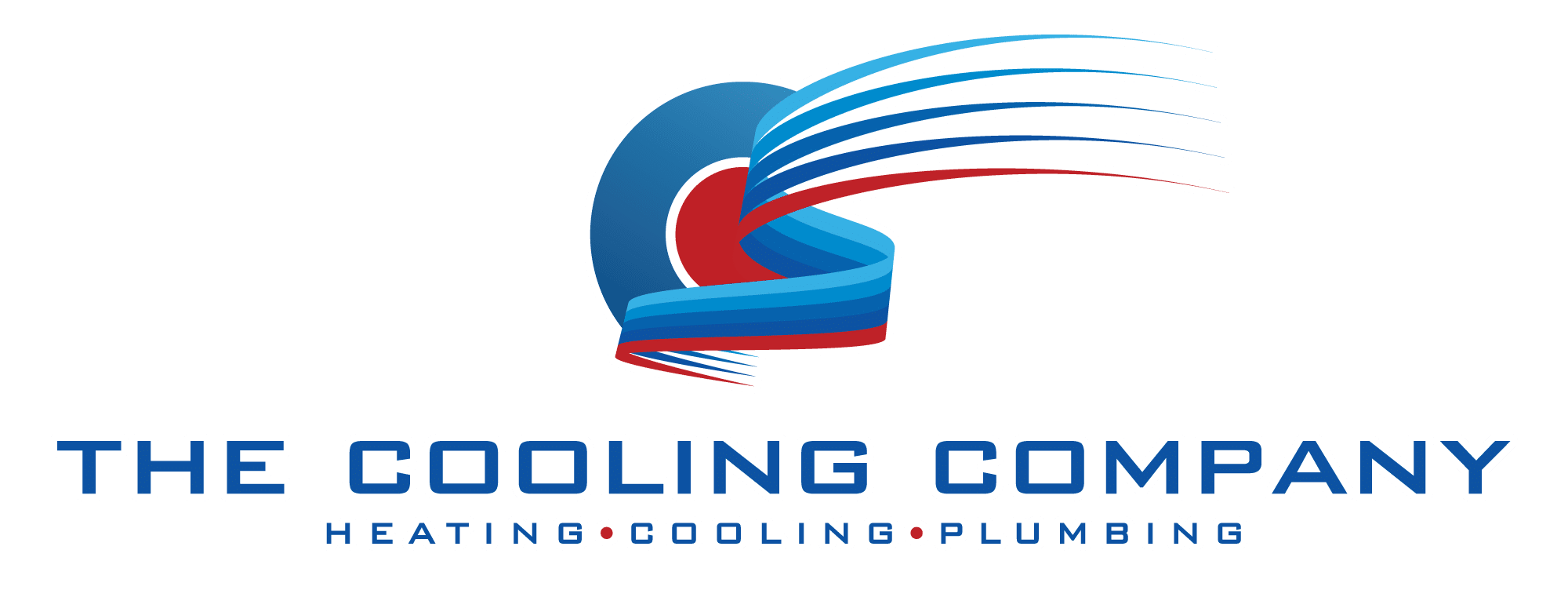Check Your Thermostat Settings First
One of the simplest and most common reasons for cold air blowing from your heating system is incorrect thermostat settings. Many homeowners overlook this basic step, but ensuring your thermostat is set correctly can save you time and money.
Make sure your thermostat is set to “heat” during the winter months. It should also be set a few degrees above your current room temperature to prompt the system to activate and warm your home. If it’s set to “cool” or “fan only,” you’ll feel cold air circulating instead of warm. An expert from Northern Services Today advises, “Ensure it’s set to ‘heat’ in winter or ‘cool’ in summer. The temperature should be a few degrees above room temperature for heating, or below for cooling.”
Additionally, check if your thermostat is functioning properly. Sometimes, faulty wiring or dead batteries can cause it to malfunction, sending incorrect signals to your heating system. Replacing batteries or resetting the thermostat can often resolve these issues quickly. It’s also wise to consider the location of your thermostat; if it’s placed near a drafty window or a heat source like a lamp, it can give inaccurate readings, leading to improper heating or cooling.
Furthermore, if your thermostat is an older model, you might want to explore upgrading to a smart thermostat. These modern devices can learn your heating preferences and adjust themselves accordingly, ensuring optimal comfort and energy efficiency. Many smart thermostats can be controlled remotely via smartphone apps, allowing you to make adjustments even when you’re not at home. This can be particularly useful for managing your energy consumption and ensuring that your home is at the perfect temperature when you arrive after a long day.
Inspect and Replace Air Filters
Dirty or clogged air filters are a frequent culprit behind heating systems blowing cold air. When filters become clogged with dust and debris, they restrict airflow, forcing your system to work harder and less efficiently. This can lead to insufficient heating or even cause the system to shut down prematurely to prevent damage.
According to HVAC Software FAQs, a clogged air filter can reduce airflow by up to 15%, significantly impacting your system’s performance. Moreover, experts warn that dirty filters can cause your unit to short cycle, which means it turns on and off frequently. This not only reduces efficiency but also puts unnecessary wear on your system, shortening its lifespan.
Replacing or cleaning your air filters every 1-3 months during the heating season is a simple yet vital maintenance task. This ensures proper airflow and helps your system deliver warm air consistently throughout your home.
In addition to regular filter maintenance, it’s essential to choose the right type of filter for your heating system. There are various options available, including HEPA filters, which are designed to trap smaller particles and allergens, making them ideal for households with pets or allergy sufferers. Additionally, consider the MERV rating of the filter; a higher MERV rating indicates better filtration efficiency, although it may also restrict airflow if not compatible with your system. Always consult your system’s manual or a professional to ensure you select the best filter for optimal performance.
Furthermore, during the changing of filters, take the opportunity to inspect the surrounding area for any obstructions that may hinder airflow, such as furniture or drapes. Keeping the space around your heating vents clear can significantly enhance the efficiency of your heating system. Regular checks can also help you identify any unusual noises or smells that may indicate other underlying issues, allowing for timely repairs and maintenance that can save you money in the long run.
Examine Your Furnace Settings
If your furnace is blowing cold air despite correct thermostat settings and clean filters, the problem might lie in the furnace fan settings. Many furnaces have a fan control switch with two main settings: “on” and “auto.”
When set to “on,” the fan runs continuously, circulating air regardless of whether the furnace is actively heating. This can result in cold air blowing through your vents when the furnace isn’t producing heat. On the other hand, the “auto” setting only activates the fan when the furnace is heating, preventing cold air from circulating.
Carrier highlights that if your furnace is blowing cold air, it could be set to “on” instead of “auto,” causing the fan to run constantly even when the furnace isn’t heating. Switching the fan setting to “auto” often resolves this issue immediately.
Additionally, check if your furnace’s pilot light or ignition system is functioning properly. Persistent ignition issues often lead to strange noises in heating systems, which can be another warning sign to watch for. A malfunction here can prevent the furnace from heating air, even though the fan is running. If the pilot light is out, relighting it may be a simple fix, but if the ignition system is faulty, it might require professional attention to ensure safe operation.
Moreover, it’s essential to consider the age and maintenance history of your furnace. Older units may have components that wear out over time, leading to inefficiencies and operational issues. Regular maintenance, including annual inspections and tune-ups, can help identify potential problems before they escalate, ensuring your furnace operates at peak efficiency. Keeping an eye on the condition of the heat exchanger and ensuring that all safety features are functional can also contribute to a more reliable heating experience during the colder months.
Address Potential Ductwork Problems
Even if your heating system is working correctly, problems with your ductwork can cause cold air to blow from your vents. Leaky or damaged ducts allow warm air to escape before it reaches your living spaces, reducing heating efficiency and comfort. This issue can be particularly frustrating during the colder months when you rely heavily on your heating system to maintain a cozy environment.
Studies show that leaky ducts can waste up to 40% of your heating energy. Leaks can also create excess condensation, sometimes leading to furnace water leaks.This not only leads to cold air blowing inside your home but also increases your energy bills significantly. Inspect your ductwork for visible gaps, holes, or disconnected joints, especially in attics, basements, and crawl spaces where ducts are often exposed. Additionally, consider the age of your ductwork; older systems may be more prone to wear and tear, making regular inspections even more crucial.
Sealing these leaks with mastic sealant or metal tape can improve airflow and ensure warm air reaches every room. For extensive duct damage, consulting a professional HVAC technician is advisable to assess and repair the system properly. A technician can also perform a thorough duct cleaning, which not only enhances efficiency but also improves indoor air quality by removing dust, allergens, and other contaminants that may have accumulated over time. More details about duct efficiency and sealing can be found at HVAC Software FAQs.
Furthermore, consider investing in duct insulation, especially if your ducts run through unconditioned spaces like attics or crawl spaces. Proper insulation helps maintain the temperature of the air traveling through the ducts, reducing the likelihood of heat loss and ensuring that your heating system operates at peak efficiency. In addition, utilizing smart thermostats can help you monitor and control the temperature in different areas of your home, allowing you to identify any discrepancies that might indicate ductwork issues. By taking these proactive measures, you can significantly enhance the comfort of your home while also saving on energy costs.
Consider Heat Pump Limitations in Cold Weather
If your home uses a heat pump rather than a traditional furnace, it’s important to understand that these systems operate differently and have specific limitations in very cold weather. Heat pumps extract heat from the outside air and transfer it indoors, but their efficiency drops as outdoor temperatures fall.
Some older heat pump models struggle to supply sufficient heating when temperatures drop below 40 degrees Fahrenheit. In such cases, the system may blow cold air or cycle frequently without adequately warming your home. This is a common issue during harsh winters and can be frustrating for homeowners relying solely on heat pumps for heating.
Upgrading to a newer, cold-climate heat pump model or supplementing with an auxiliary heating source can help maintain comfort during extreme cold spells. For more insights on heat pump performance in winter, visit Buckeye Heat. If you’re unsure whether repair or replacement is the better choice, see Heating Repair vs. Replacement.
In addition to considering the model of your heat pump, it’s also crucial to evaluate the insulation and sealing of your home. Poor insulation can lead to significant heat loss, making it harder for your heat pump to maintain a comfortable indoor temperature. Investing in high-quality insulation and sealing gaps around windows and doors can enhance your home’s energy efficiency, allowing your heat pump to operate more effectively even in colder conditions.
Furthermore, regular maintenance of your heat pump is essential to ensure optimal performance. This includes cleaning or replacing filters, checking refrigerant levels, and scheduling professional inspections. A well-maintained heat pump will not only perform better in cold weather but also extend the lifespan of the unit, providing reliable heating for many winters to come. Understanding these factors can empower homeowners to make informed decisions about their heating systems and improve their overall comfort during the colder months.
Regular Maintenance Prevents Cold Air Issues
Preventing your heating system from blowing cold air often comes down to regular maintenance and timely inspections. Annual checkups before the heating season allow technicians to identify and address potential problems such as dirty filters, malfunctioning components, or overheating furnaces before they affect your comfort.
Routine maintenance also includes cleaning coils, checking refrigerant levels (for heat pumps), lubricating moving parts, and testing system controls. These steps ensure your heating system operates efficiently and reliably throughout the winter.
As recommended by Northern Services Today, scheduling professional inspections annually can save you from unexpected breakdowns and cold air issues when you need heat the most.
Summary: Stay Warm by Diagnosing Early
When your heating system blows cold air, the cause can range from simple thermostat settings to more complex mechanical or ductwork problems. By systematically checking your thermostat, replacing air filters, verifying furnace fan settings, inspecting ductwork, and understanding heat pump limitations, you can often resolve the issue yourself or know when to call a professional.
Regular maintenance remains the cornerstone of a reliable heating system. It helps prevent cold air problems and extends the lifespan of your equipment. Taking these steps ensures your home stays warm and comfortable throughout the cold months.
If you’re ever unsure or the problem persists despite troubleshooting, contacting a qualified HVAC technician is the safest and most effective way to restore your heating system’s performance.
Get Expert Help from The Cooling Company
If your heating system is still blowing cold air after following our troubleshooting tips, it might be time to call in the experts. At The Cooling Company, we understand the urgency of having a functional heating system, especially during the colder months. Our certified technicians are ready to provide you with fast, efficient, and reliable HVAC services in Las Vegas. Don’t let a chilly home disrupt your comfort—Schedule a Service with us today and experience the warmth and peace of mind you deserve.



